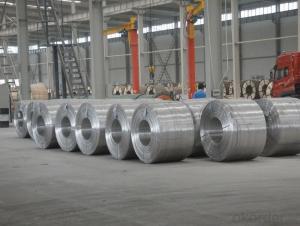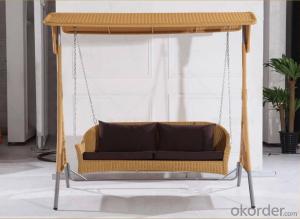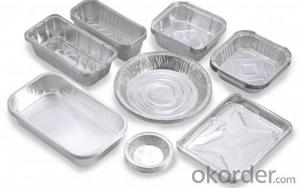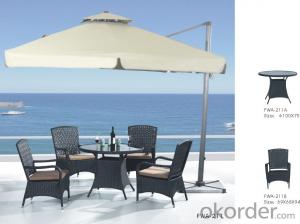Extruded Aluminum Stock Shapes
Extruded Aluminum Stock Shapes Related Searches
Led Light Bulbs For Ceiling Fixtures Led Lamps For Ceiling 42 In Ceiling Fan With Light Aluminum Coil Stock For Gutters Aluminum Foil For The Grill Hole Saw For Aluminum Plate Aluminum Tread Plate For Trailer Bow Plate For Aluminum Boat Aluminum Foil For Grow Room Aluminum Foil For Joint PainHot Searches
Stock Price For Aluminum Aluminum Coil Stock For Sale Aluminum Gutter Coil For Sale Used Aluminum Scaffolding For Sale 1/4 Aluminum Plate For Sale Aluminum Bar Stock For Sale Aluminum Round Stock For Sale Aluminum Diamond Plate For Sale Aluminum Scaffolding For Sale Craigslist 6061 Aluminum Plate For Sale Aluminum Dock Plate For Sale 7075 Aluminum Plate For Sale Aluminum Tread Plate For Sale Aluminum Checker Plate For Sale Aluminum Plate For Sale Near Me Plate Aluminum For Sale Aluminum Plate For Sale Aluminum Square Stock For Sale Aluminum Flat Stock For Sale Billet Aluminum Stock For SaleExtruded Aluminum Stock Shapes Supplier & Manufacturer from China
Okorder.com is a professional Extruded Aluminum Stock Shapes supplier & manufacturer, offers integrated one-stop services including real-time quoting and online cargo tracking. We are funded by CNBM Group, a Fortune 500 enterprise and the largest Extruded Aluminum Stock Shapes firm in China.Hot Products
FAQ
- There are several different types of surface treatments available for architectural aluminum sheets. These treatments are designed to enhance the appearance, durability, and performance of the aluminum, making it suitable for a wide range of architectural applications. One common type of surface treatment is anodizing. Anodizing involves immersing the aluminum sheet in an electrolytic solution and applying an electric current to create a protective oxide layer on the surface. This oxide layer can be dyed to achieve a desired color or left clear for a natural metallic appearance. Anodized aluminum sheets are known for their excellent corrosion resistance, scratch resistance, and color stability. Another type of surface treatment is powder coating. Powder coating involves applying a dry powder electrostatically to the aluminum sheet and then curing it in an oven. The powder melts and fuses to the surface, creating a smooth and durable finish. Powder coating provides excellent color retention, weather resistance, and resistance to chipping and cracking. A third type of surface treatment is PVDF coating. PVDF (polyvinylidene fluoride) coating is a high-performance fluoropolymer resin that is applied to the aluminum sheet through a coil coating process. PVDF coatings offer exceptional resistance to fading, chalking, and chemical attack, making them ideal for exterior applications where color retention and durability are key. Additionally, there are various mechanical surface treatments available for architectural aluminum sheets. These treatments, such as brushing or polishing, can provide a desired texture or reflectivity to the surface. Mechanical treatments can be used to create a brushed, satin, or mirror-like finish, adding aesthetic appeal to the aluminum sheet. In summary, the different types of surface treatments available for architectural aluminum sheets include anodizing, powder coating, PVDF coating, and mechanical treatments. Each treatment offers unique benefits and characteristics, allowing architects and designers to choose the most suitable option for their specific project requirements.
- Some of the different methods of joining aluminum sheet include welding, adhesive bonding, riveting, clinching, and mechanical fastening.
- Hi everyone, I have this problem that I'm somewhat confused about. The problem is:An alloy of aluminum and magensium was treated with sodium hydroxide solution, in which only aluminum reacts to give hydrogen gas:2Al + 2NaOH + 6H20 --gt; 2NaAl(OH)4 + 3H2If a sample of alloy weighing 1.118 g gave 0.1068 g of hydrogen, what is the percentage aluminum in the alloy?How do I account for the magnesium and what stoichiometric relationships would I need to set-up? This is very confusing, but I appreciate the slightest of help on this!Thank you.
- You don't need to worry about the magnesium at all, because it doesn't enter into the reaction. You have a balanced equation for aluminium and hydrogen, and the data given are sufficient: From the equation, you know that 2 moles of aluminium produce 3 moles of H2. 0.1068 g of H2 were produced, so divide this by molecular mass of H2 (2.016) to determine the moles of H2 produced. You know that 3 moles of H2 would have been produced from 2 moles of Al. Therefore, multiply the moles of H2 by 2/3, to determine the moles of Al that were present. Now multiply this number by the atomic mass of Al, to determine the grams of Al. Now divide this number if grams by 1.118 and multiply by 100 to determine % Al present in the alloy.
- The thermal expansion coefficient of aluminum sheets is approximately 23.1 x 10^-6 per degree Celsius. This means that for every degree Celsius increase in temperature, the aluminum sheet will expand by 23.1 parts per million in length. This coefficient may vary slightly depending on the specific alloy and manufacturing process of the aluminum sheet.
- Yes, aluminum sheets can be stamped or engraved. Aluminum is a versatile material that can be easily worked with using various methods, including stamping and engraving. Stamping involves pressing a design or pattern onto the surface of the aluminum sheet using a stamping machine. This method is commonly used in industrial applications for creating embossed or raised designs. On the other hand, engraving involves cutting or etching a design into the surface of the aluminum using a specialized engraving tool. This method is often used for creating detailed and precise designs or for adding personalized markings to aluminum sheets. Both stamping and engraving can be done on aluminum sheets to achieve different decorative or functional purposes.
- Indeed, bus shelters can utilize aluminum sheets. Aluminum, a lightweight and enduring substance, finds extensive use in construction ventures, encompassing bus shelters. Its exceptional resistance to corrosion renders it apt for outdoor scenarios, where it confronts inclement weather. Moreover, aluminum sheets are conveniently malleable and can be fashioned into manifold forms and dimensions, permitting tailor-made designs and effortless installation. Employing aluminum sheets for bus shelters also entails a cost-efficient resolution as it demands scant upkeep and boasts a prolonged existence.
- Aluminum sheets possess several acoustic properties that make them suitable for various applications. Firstly, aluminum is a lightweight material, which means it has a high strength-to-weight ratio. This property allows aluminum sheets to vibrate easily when struck, resulting in good sound transmission. Additionally, aluminum has a low density, which means it can absorb sound energy and reduce noise levels. Moreover, aluminum sheets have excellent corrosion resistance, which ensures their durability and longevity in different environments. This property is particularly important in applications where acoustic performance needs to be maintained over time, such as in construction or automotive industries. Furthermore, aluminum exhibits good thermal conductivity, which allows for efficient heat dissipation. This property is beneficial in applications where heat generated by sound sources needs to be dispersed effectively, preventing any potential damage or degradation of the material. Overall, the acoustic properties of aluminum sheets, including their lightweight nature, sound transmission, noise reduction capabilities, corrosion resistance, and thermal conductivity, make them a versatile and reliable choice for various acoustic applications.














































